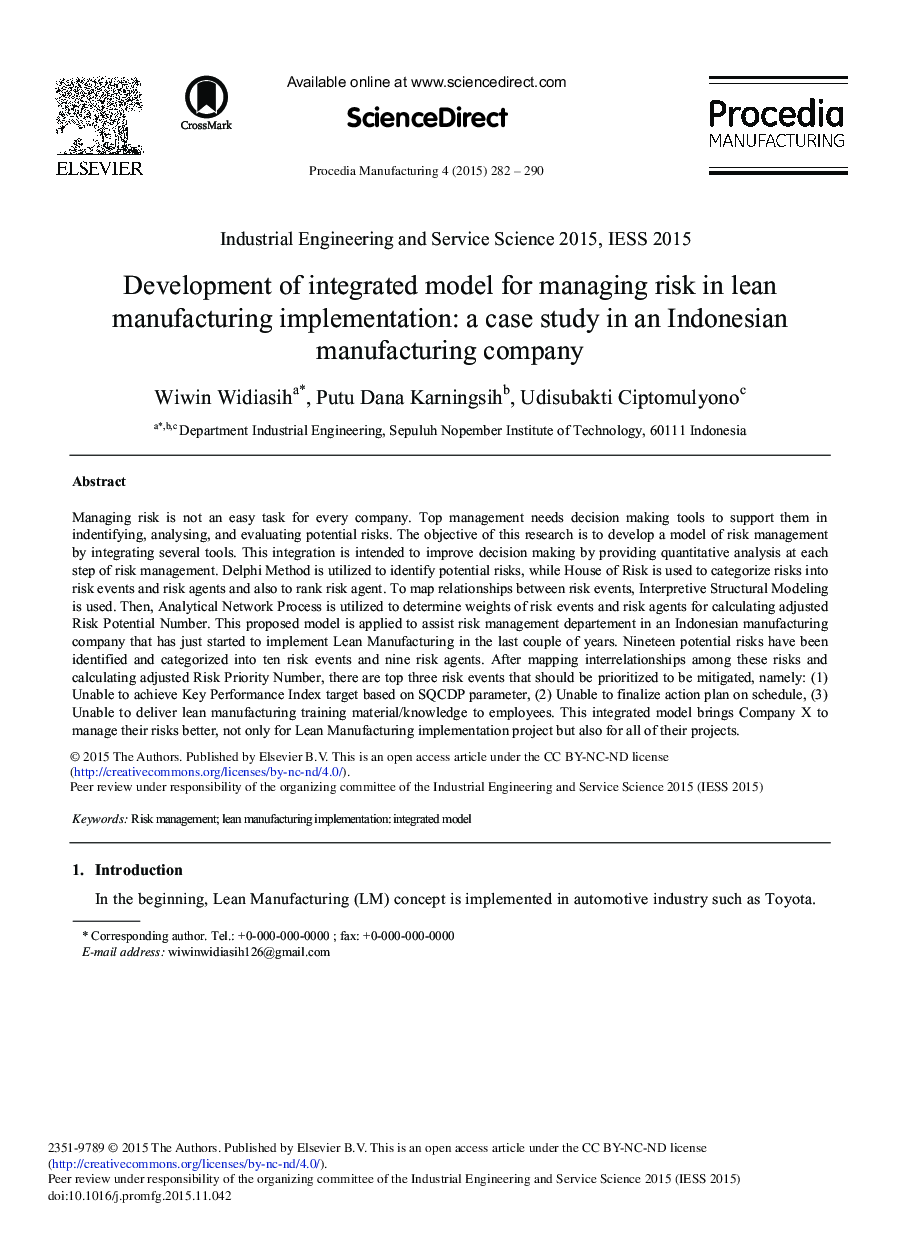| Article ID | Journal | Published Year | Pages | File Type |
|---|---|---|---|---|
| 1143534 | Procedia Manufacturing | 2015 | 9 Pages |
Managing risk is not an easy task for every company. Top management needs decision making tools to support them in indentifying, analysing, and evaluating potential risks. The objective of this research is to develop a model of risk management by integrating several tools. This integration is intended to improve decision making by providing quantitative analysis at each step of risk management. Delphi Method is utilized to identify potential risks, while House of Risk is used to categorize risks into risk events and risk agents and also to rank risk agent. To map relationships between risk events, Interpretive Structural Modeling is used. Then, Analytical Network Process is utilized to determine weights of risk events and risk agents for calculating adjusted Risk Potential Number. This proposed model is applied to assist risk management departement in an Indonesian manufacturing company that has just started to implement Lean Manufacturing in the last couple of years. Nineteen potential risks have been identified and categorized into ten risk events and nine risk agents. After mapping interrelationships among these risks and calculating adjusted Risk Priority Number, there are top three risk events that should be prioritized to be mitigated, namely: (1) Unable to achieve Key Performance Index target based on SQCDP parameter, (2) Unable to finalize action plan on schedule, (3) Unable to deliver lean manufacturing training material/knowledge to employees. This integrated model brings Company X to manage their risks better, not only for Lean Manufacturing implementation project but also for all of their projects.
